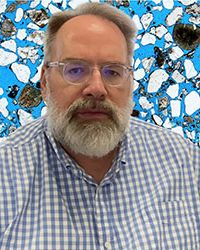Petrographic Analysis of Uranium-Bearing Sandstones from the Miocene Oakville Sandstone, South Texas Uranium Province
Join Zoom Meeting
Join this presentation In-Person: BEG Building 130, VR Room 1.116C Or Via Zoom
Meeting ID: 932 0137 7630
Passcode: 013011
Presenter
Dr. Robert M. Reed
Research Scientist Associate
Bureau of Economic Geology
Jackson School of Geosciences
The University of Texas at Austin
Description
Fluvial sandstones of the Miocene Oakville Formation of Live Oak County, Texas are notable for roll-front uranium deposits. The deposits concentrate uranium and molybdenum in crescent-shape volumes of porous sandstone which have undergone interaction with both meteoric water flowing downward from the surface and deep-seated connate water flowing upward along faults. Previous studies have described the architecture of the deposits and the sedimentary systems involved as well as the detailed chemistry of the mineralizing waters. A recent Bureau study detailed the location and extent of deposits and detailed current mining operations. This project seeks to understand the microscale location and mineralogy of the uranium and molybdenum in this unit.
The Oakville sandstones are litharenites and feldspathic litharenites. Carbonate and volcanic rock fragments are common constituents along with quartz and feldspar. Reworked Cretaceous fossils are also common. Many sands are only weakly cemented by early clay cements. Others have varying degrees of calcite cement in addition to clay. Zeolite cement is a rare constituent which may not contribute to sandstone cohesion. Some oxidized sandstone samples have iron-rich cement which may be goethite or limonite.
Samples are being examined with both the optical microscope and with the scanning electron microscope (SEM). Both energy dispersive X-ray spectroscopy (EDS) point spectra and element maps are being used to localize uranium and molybdenum. This is complicated by the micrometer-scale size of most of the uranium and molybdenum minerals. Fortunately, the high atomic number of uranium makes uranium minerals easy to locate with backscattered electron imaging. Several previously undocumented uranium- and molybdenum-bearing minerals (i.e. powellite, calcurmolite, brannerite, and umohoite) have been identified used the SEM. However, an attempt to confirm identification of these minerals using X-ray diffraction analyses failed owing to low mineral concentrations. Uranium minerals seem to be preferentially located in association either with clay coats or with volcanic rock fragments. SEM examination has greatly aided in the understanding of these complicated rocks.
